Faraway creatures lurk in Deptford Creek. Take a guided tour along its bed at low tide and the volunteer custodians of this fragile ecosystem will uncover Asian mitten crabs, egrets returned from Africa and eels born in the Sargasso Sea.
But there is a stranger resident still, one most guides won’t speak of – even if, consciously or not, they steer clear of the corner of the Creek it inhabits. Here, it is said, lies a deep, drowned lair, home to a long forgotten creature with a long forgotten name: The Deptford Creek Necker.

To see for ourselves, PoL pulled a few strings. With the help of Maeve Atkins, from esoteric mudlarkers The Redriff Society, we found a guide willing to show us the lonely site.
A few phone calls and tide-table consultations later, Guy Hebden emerges from the mounds of muddy detritus that surround the creekside volunteers’ centre. A tall, broad man with weather-worn skin and windswept hair, he gives the impression you might have found him working in the Creek at any time in its long history.
Today, Guy is in a hurry. He had been hoping we’d meet on a day when low tide wasn’t so late in the afternoon. With gruff but goodnatured haste he thrusts mud-caked waders and a walking pole at me, and descends into the Creek.
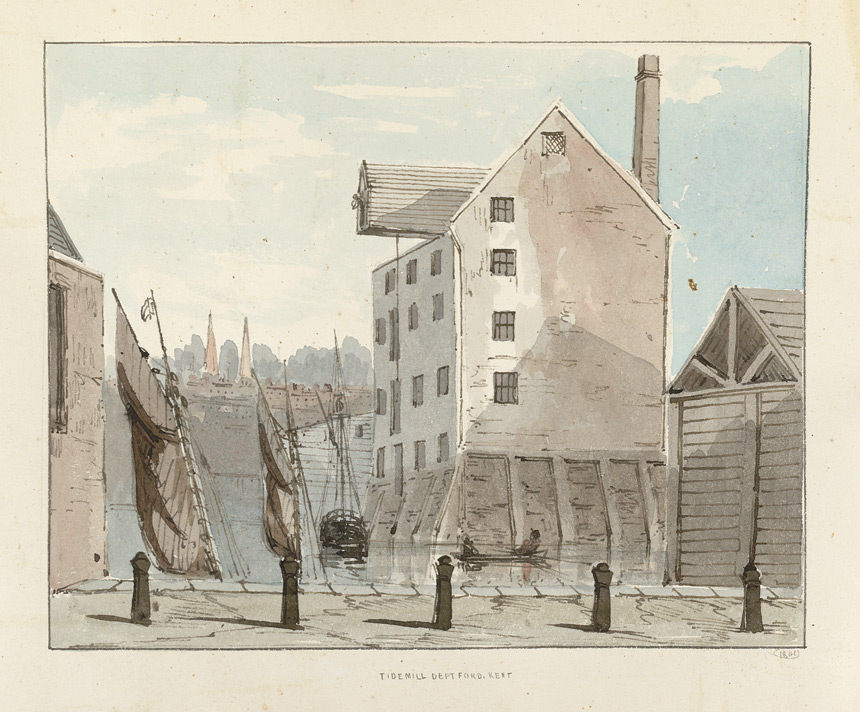
We head upstream. The Ravensbourne river, silver beneath a white November sky, snakes past us to meet the Thames.
A DLR train rattles across a concrete viaduct above, and I struggle to keep up as Guy stomps and squelches and speaks of Canterbury pilgrims and power stations; of Wat Tyler and Jack Cade; of shipbuilding and chemical works; tide mills going back a thousand years; Romans and the old track that led them to ford the river here.
“But that’s just the recent stuff”, he adds, with a grin. “This mud we’re walking in, the river around us, the clay beneath. This is deep time”.
He pauses a moment, to let me catch up.
“Deptford, you see? The Deep Ford”
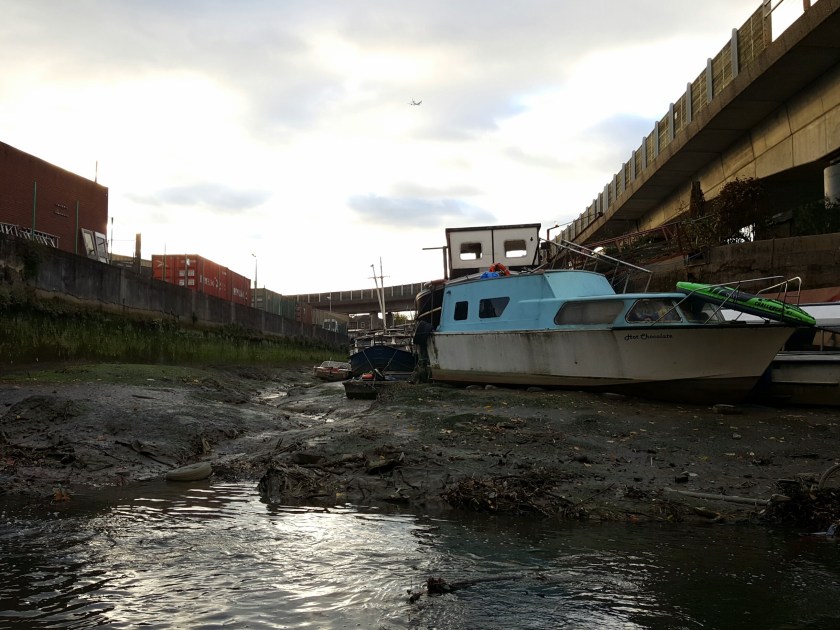
Tide-stranded boats squat on the mud. Past the last of them, over a slippery weir, around a sharp bend in the river, Guy finally comes to a stop. Within sight is the end of the traversable Creek, where the Ravensbourne disappears beneath a web of A-road and railway.
We have crossed a threshold. Guy speaks now of water spirits. Of treacherous mermaids and shapeshifting nixies, of Peg Powler, Jenny Greenteeth and their luckless victims.
“A neck. Right? The Old English word is nicor. Germany have their nix. In Sussex you’ve got the knucker – a dragon who dwells in deep watery holes. Netherlanders call it nekker, so it’s likely ours was named by Dutch sailors or merchants”.
Guy points to what looks like a small island or peninsula, made rectangular by old stone walls. Whatever use the workers of the Creek once made of it, it has long-since been given over to wildlife. A swan’s nest is just visible amongst the reeds on one side.
But the other side – facing a kind of backwater, away from the main flow of the river – looks forlorn.
Birds seem to avoid it, as does much of the plant life – there is a single clutch of water hemlock on the far wall, and on the island itself a lone blackthorn bush (Guy says it never berries).
Following Guy’s lead, I stare at the water in the middle of this stretch. Does it move differently? Is it deeper there? Darker?
Backs of old warehouses block out much of the light, and the Ravensbourne drifts by silent and slow.
It is hard to tell.
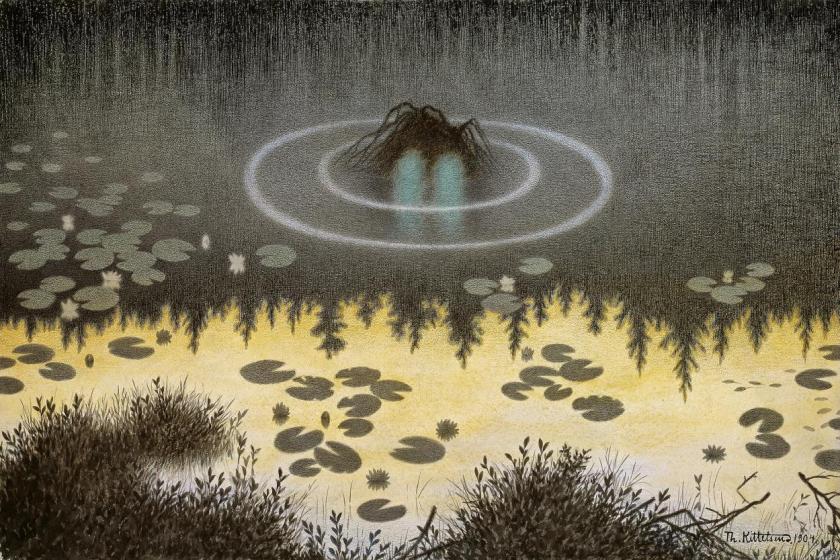
The form taken by the Deptford Creek Necker varies from account to account. Merman? Serpent? Hag? Some call it a Shellycoat or Grindylow, say that years ago, when the Thames and its tributaries spread wide and unhindered into ancient bog and marshland, the thing swam down from the north, and became trapped here by the encroaching city.
Guy is a sceptic. Though I note he won’t walk any further. I think what he means is he doesn’t believe in dragons or mermen. But he does believe there are things we can’t explain.
And things we can’t ignore.
Like the bones.
“For months, sometimes years, there’ll be nothing. Then it will start again. Cormorants, swans, rats – even the occasional seal. And not just creatures of the water. Foxes, the odd poor dog. Whole heaps of remains wash up here”.
And… anything else?
Guy looks at me, half mocking, half warning.
“Children? That’s just old wives tales”.
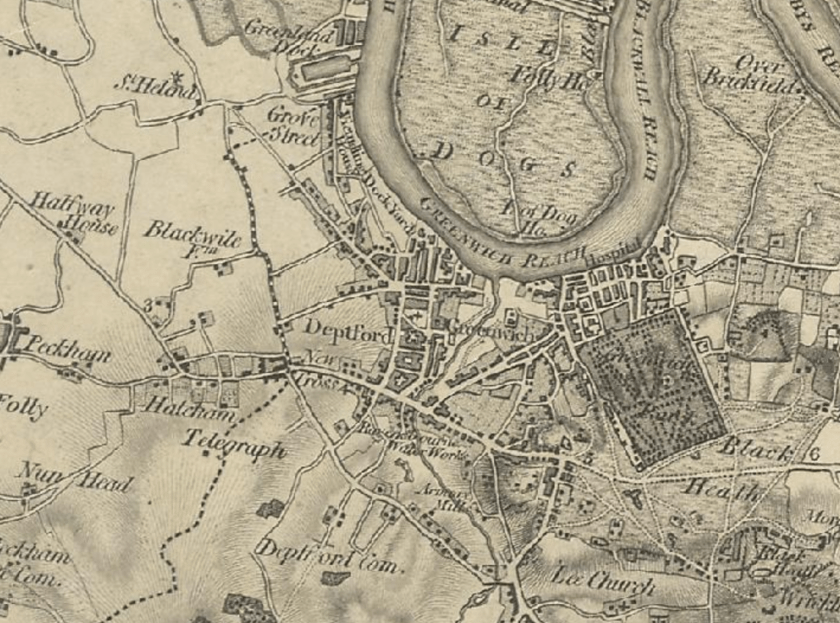
Still, I am curious as to how a sceptic explains the bones.
“Any mudlarker will tell you that rivers are sifters, sorters. You don’t just find one bit of pottery at low tide, you find a whole pile. Bricks with bricks. Rope with rope. The Ravensbourne is no different. All sorts gets dragged down from Lewisham and dumped here. Maybe this crook of the creek is just where all the dead animals wash up. They’ve got foxes in Catford too, you know.”
Sure. But no seals.
“I’m not saying -” Guy trails off. For the first time he loses his self-assurance. He stares into the water, as if he might find the right phrase there.
“There’s the idea that it’s an old story to keep kids away from water”, he says carefully. “I think that’s half right. The mermaid or serpent is a symbol, yes. But it stands for something else. Something ancient, that people don’t have words for”.
He tells me of the desperate, draining feeling that is associated with that corner of the Creek. Has he felt it?
Guy nods.
“That’s why we’re not going any closer. I’m not scared I’ll be chomped on. I’m scared of feeling that feeling again”.
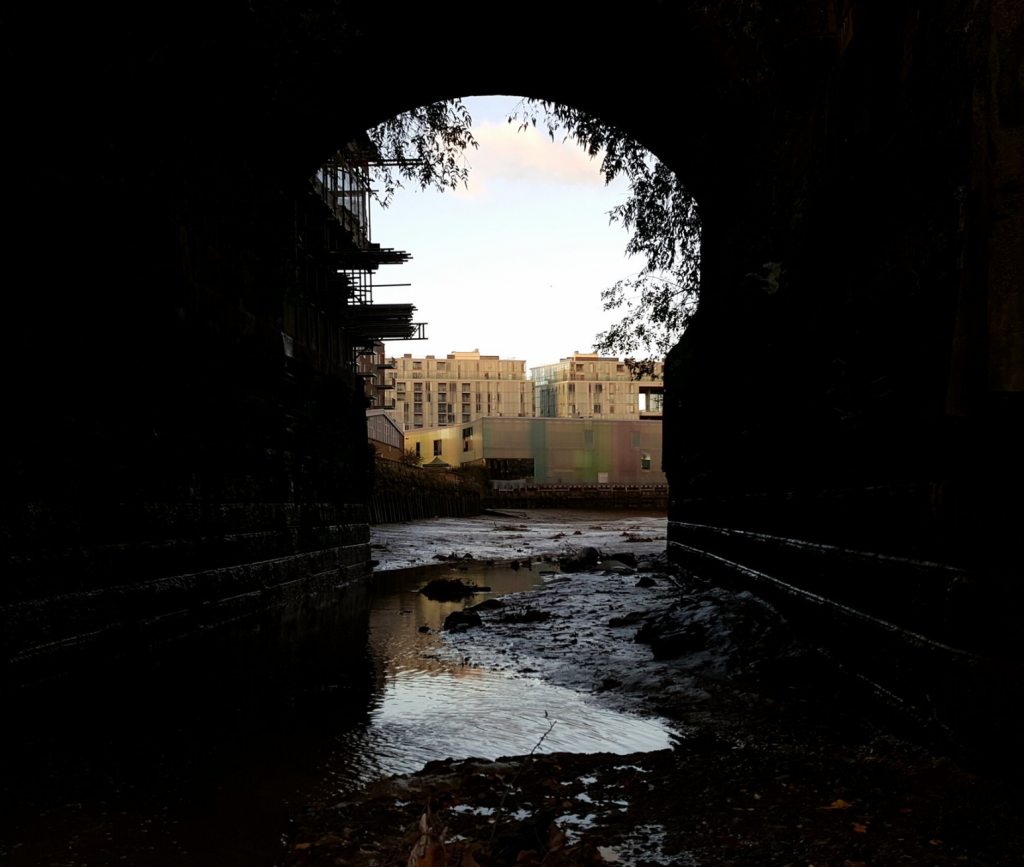
I am relieved when we turn to head back. It’s getting dark, and I now understand Guy’s trepidation about the late start. It’s harder now to discern mud from river from brick – each black, slippery surface glimmers with light from the new housing developments that tower above the creek.
We’re between night and day. Autumn and winter. The creek is a meeting of boundaries. Fresh water and salt. Conservation and urban development. Conflict isn’t always destructive, says Guy. As the official Creek guides will tell you, decaying timbers seed new life.
I’m not quite sure what he’s getting at.
As we climb back up to the ramshackle huts, I have the impression that there is much unsaid by my guide. Things beneath the surface.
I peel off the waders and hand back my stick.
“London seems old” says Guy. “But really it’s a passing thing. Precarious, like marsh flowers on a river wall.”
- Candidate: The Deptford Creek Necker
- Type: Folkloric entity (water)
- Status: Active (sporadic)

Another enjoyable tale. Thanks.
LikeLike
Glad you liked it!
LikeLike
Vividly penned account with an edge of the uncanny.
LikeLike
Intriguing tale & one that can be followed quite closely on Google maps / Streetview. It does look like a dank rotten corner.
LikeLike
Incidentally it prompted me towards looking at the Grand Surrey canal route along which, somewhere nearby, there was a Necker Bridge.
LikeLike
That’s very interesting. Have also been having a discussion today about the nearby river Neckinger, and whether its name derives from ‘Neck’ as in water spirit/serpent (most sources say that it derives from a nearby gallows with the nickname, ‘Devil’s Neckerchief’)
LikeLiked by 1 person
It’s also the site of the decisive & rather bloody battle that ended the Cornish rebellion of 1497.
LikeLike
There is also the River Neckinger, that flows (underground mainly) from somewhere near Elephant & Castle to St Saviours Dock. Any connection I wonder?
LikeLike
I’ve been discussing this recently. Most sources say the Neckinger takes its name from a gallows on nearby Jacob’s island, which was nicknamed the ‘Devil’s Neckerchief’, but I can’t quite let go of the idea it could be related to ‘Neck’ meaning water spirit.
LikeLike
Necker Bridge was where Trundleys Road crossed the Grand Surrey canal at the NW point of what is now Folkestone Gardens. 51.484354, -0.042246.
LikeLike
Love the idea that even in the middle of 21st century development there is still a spot of ancient elemental power remaining.
LikeLike
I always learn so much from your stories and this one has really made me want to explore London’s waterways. Thoroughly enjoyable piece, thank you.
LikeLike
Thank you. Yes, London’s rivers, canals, cuts and creeks are some of my favourite places to be.
LikeLike
Just got here via Sense of Place podcast. Jenny Greenteeth gets a mention in this piece. I would tell the story of Jenny to my kids to warn them of the dangers of ponds and lakes. I used to read about her in an illustrated guide to fairies and goblins when I was a kid. She was one of the most terrifying in the book. I don’t know anyone else who has heard of her.
LikeLike